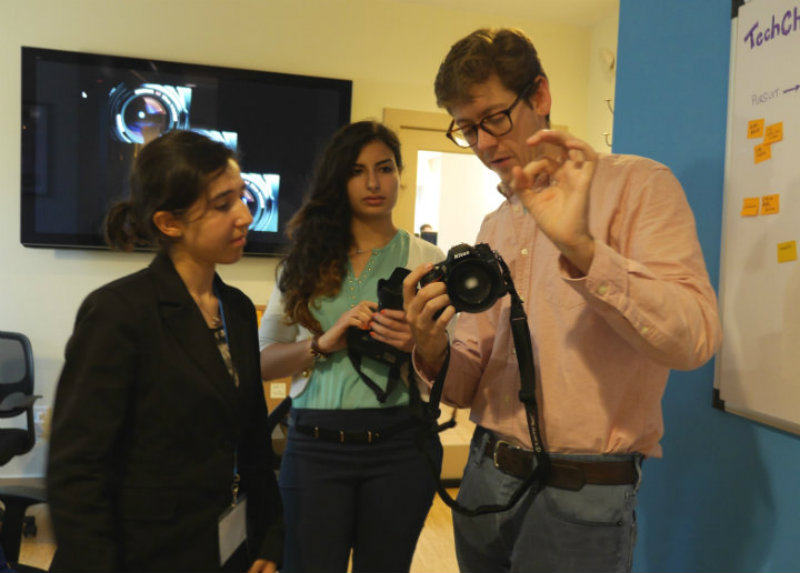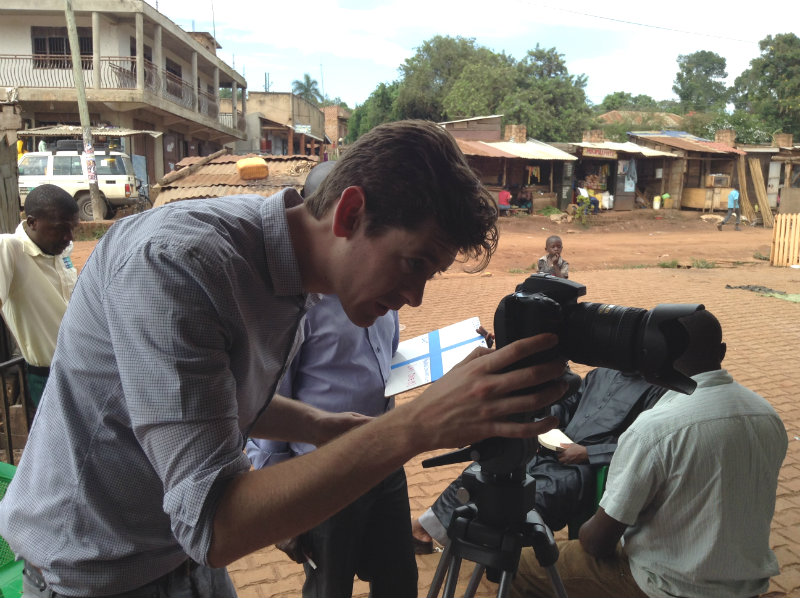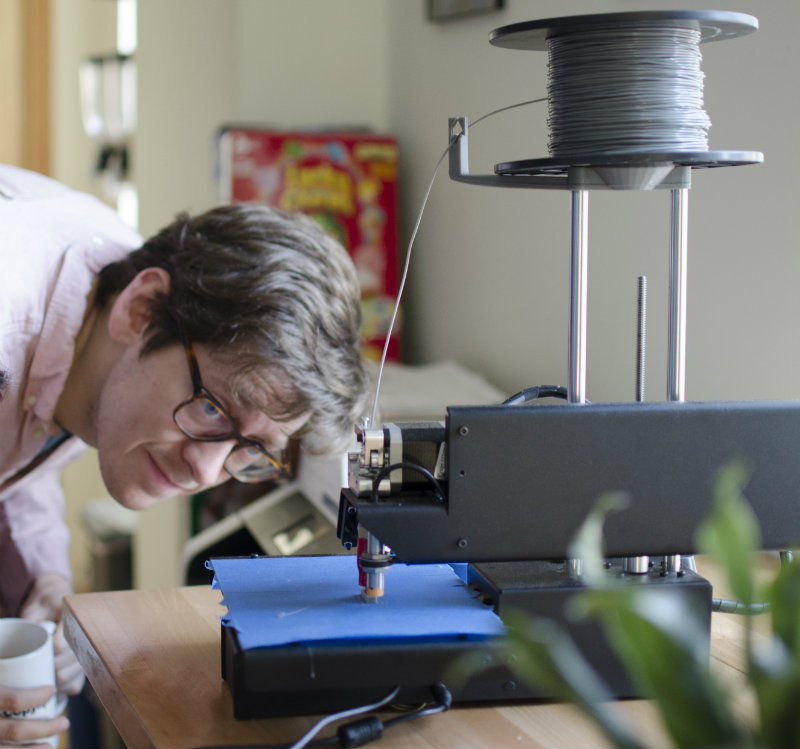Meet Charlie Weems, TechChange’s project manager. Like many of us here, Charlie wears many different hats at TechChange. Read more and get to know Charlie and what he does as a project manager here.
Where are you from?
Amherst, Massachusetts
What did you do before working at TechChange?
I worked at USAID/Tanzania as well as two other USAID contractors. Before that, I graduated from Whitman College where I majored in Politics and wrote my honors thesis on the regulation of commodities markets to prevent price spikes of staple foods.
How did you hear about TechChange?
As lame as this sounds, I actually saw a TechChange job posting on LinkedIn and responded. The deadline for applications was already a few months past, but I decided to apply anyway and I’m really glad that I did.

TechGirls Ghada and Nataly learn about photography with Charlie during their visit to the TechChange office
What exactly do you do at TechChange? What does a typical day look like for you?
Lots of things! I rotate from videography, to script writing, to front-end web development. I also have been working on proposals for new contracts, which is exciting. When I first started at TechChange, I was mostly focused on assembling self-paced courses, like our course about diagnosing and treating Malaria that has now been deployed in Nigeria and Uganda. Building a training for TechChange requires a lot of multidisciplinary skills such as design experience, conducting video interviews, proofreading technical content, and being able to create engaging learning exercises.
Recently, I’ve pivoted towards web development with the redesign of our website. This was a great experience because I was able to collaborate with our graphic designer Yohan, as well as the rest of the tech team to get the website launched. Overall, I ended up contributing 395,179 lines of code to the github repository for our main website; it feels great to know that thousands of people are viewing it every month. Next, I’ll be focusing on the future of TechChange’s online learning platform. We have some great mockups so far and I think folks in our courses will really love the features we’re adding.
How did you get into programming and social change?
My dad was the author of a fairly popular series of C++ and Java textbooks, so I kind of grew up with computers around all the time. In high school I began exploring web-design and briefly ran my own shop building websites for small businesses that I knew. Being at TechChange has really taken my development skills up a notch though, and there’s a lot more left to learn. Pair coding with Matt or Will, our tech team is a great experience.
As for the social change part, I was always involved in volunteer work growing up, but going to Whitman College was a huge turning point for me. The politics program there has a strong social and economic justice focus, so organisations with that focus was first and foremost in my mind when I started looking for jobs.
What is the most important lesson you’ve learned in international development so far?
Projects and innovations need to have a laser-beam focus on being sustainable, and that often means incorporating a for-profit incentive. It’s really easy to get excited about a new innovation geared towards developing countries (think of how many different battery-charging cook stoves we see each year), but the real test for any innovation is whether or not it’s useful enough that people are willing to buy it. Cell phones and solar panels are fantastic examples of products that have passed this test in many developing country contexts, while others (such as the Playpump) run into major issues with long-term sustainability.
How do you keep up with the latest news in software development?
Hacker News keeps me pretty up to date most of the time.
What do you love most about working at TechChange?
It’s really hard to pick! But I’d probably have to say the people. It’s wonderful to come in everyday and work with folks that are not only super smart, but also really funny. I think I’ve laughed more while working here than at any other place.
What is your favorite TechChange moment so far?
Probably when we finally turned in our Malaria Consortium project. Catherine, Swetha and I literally had to sprint to the nearest Fedex so that it would get to Uganda on time. It was great to come back to the office having completed TechChange’s largest project ever.
What do you do when you’re not at TechChange?
Lately I’ve been spending a lot of time working on my 3D printer! It’s been a lot of fun to assemble. Once I get it fine-tuned I think I’ll take on making drone parts. Beyond that I usually like going out camping with friends or hanging out at happy hours after work.
If you had to direct someone to the best place to eat in D.C. where would it be?
I’m a Huge fan of Right Proper Brewing Company in Shaw.



